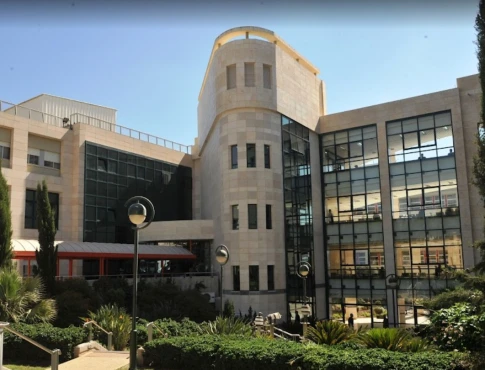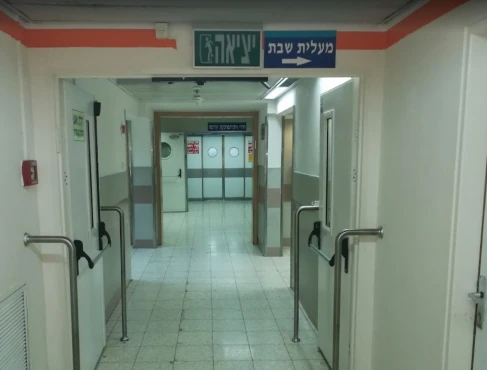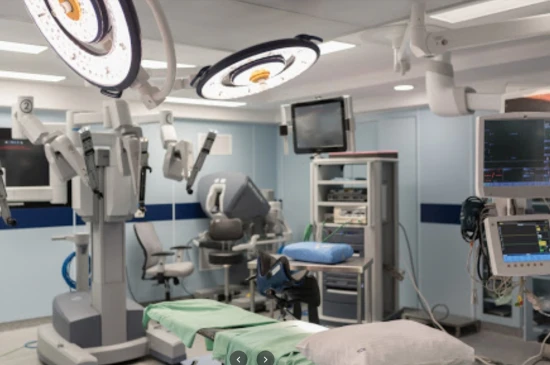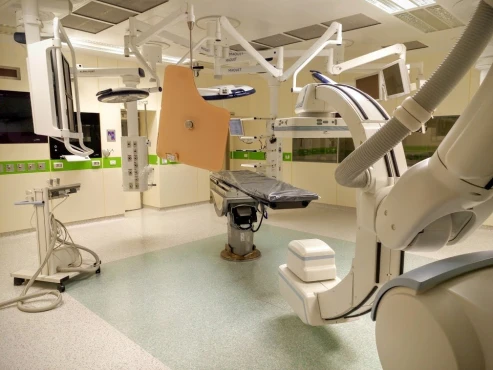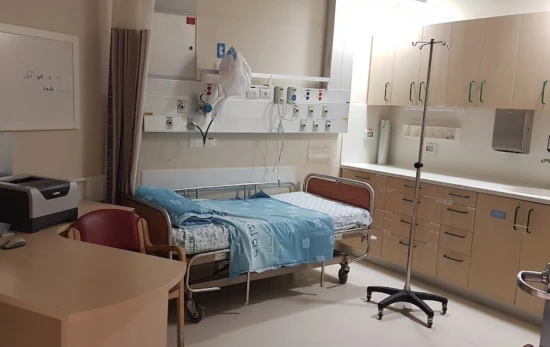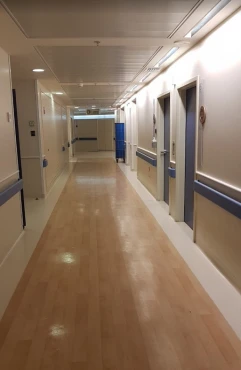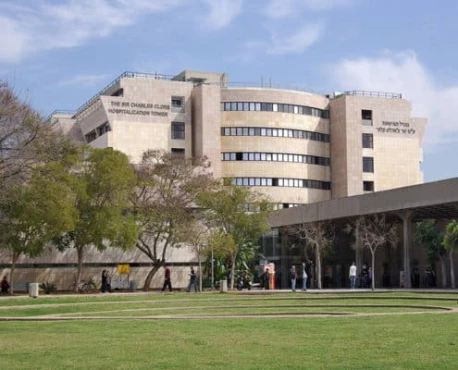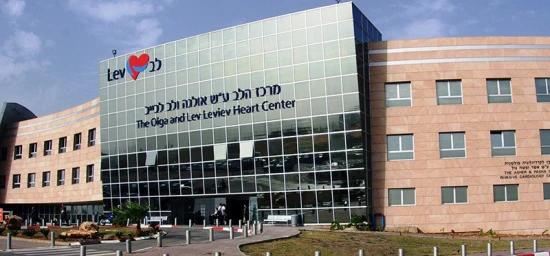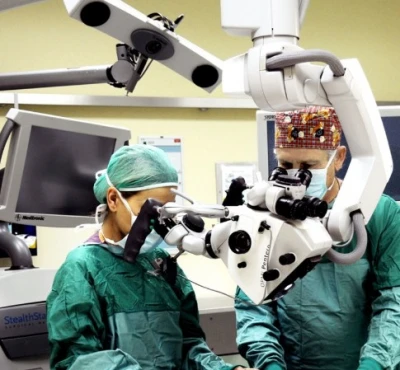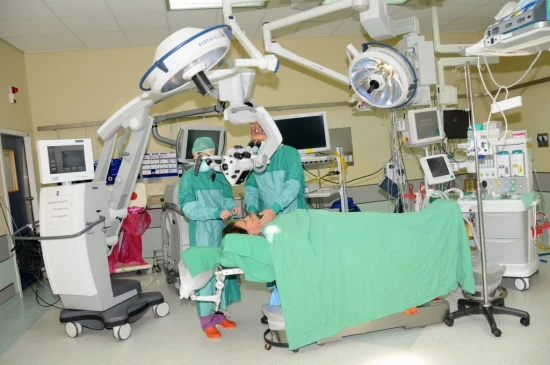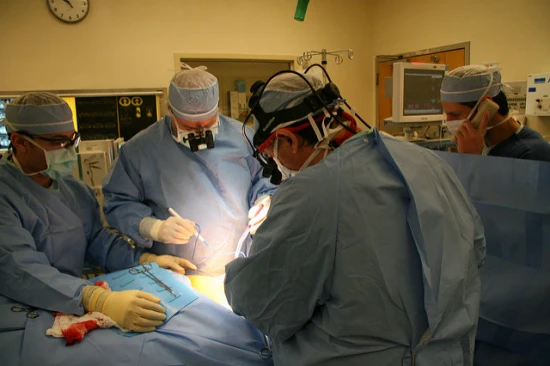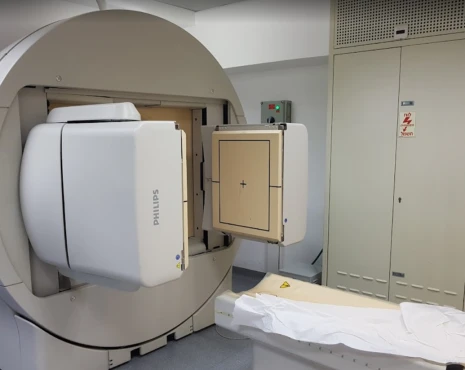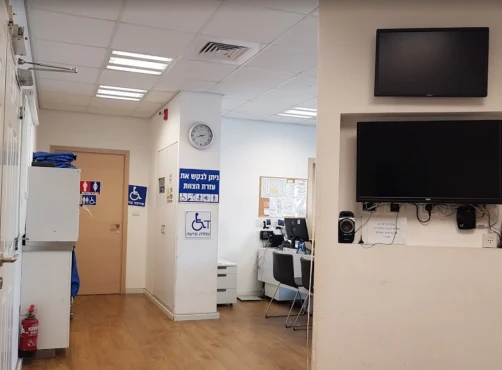Radiation therapy in 9 Oncology clinics in Israel
9 clinics specializing in Oncology providing
Radiation therapy
Radiation therapy uses high-energy radiation to target and destroy cancer cells, limiting their ability to grow and divide. It is a common medical procedure in which precise doses of radiation are administered to specific areas of the body.
Read more...
procedure in Israel.
Sorted by:
Relevance
Rating
Cost of procedures
Relevance
Prices for selected procedures, total:
by request
Prices for popular procedures:

Tel Aviv, Israel
Specializations: Cardiac surgery, Vascular surgery, Thoracic surgery, Neurosurgery, Spine surgery, Orthopedic surgery, Oncology
Languages: English, Russian
Possessing the highest qualifications, the clinic staff strictly adheres to the principle of an individual approach, both from the side of medicine and from the
read more
Prices for selected procedures, total:
by request
Prices for popular procedures:
Prices for selected procedures, total:
by request
Prices for popular procedures:

Tel Aviv, Israel
Specializations: Cardiac surgery, Vascular surgery, Thoracic surgery, Neurosurgery, Spine surgery, Orthopedic surgery, Oncology
Languages: English, Russian, Ukrainian
Assuta is the largest private hospital in the country. Every year the clinic receives several hundred thousand Israelis and patients from all over the world
read more
Prices for selected procedures, total:
by request
Prices for popular procedures:

Herzliya, Israel
Specializations: Cardiac surgery, Vascular surgery, Thoracic surgery, Neurosurgery, Spine surgery, Orthopedic surgery, Oncology
“Herzliya Medical Center” Private Hospital is one of the leading medical institutions in Israel, founded in 1983 with the aim of creating a medical institution
read more
Prices for selected procedures, total:
from $295
Prices for popular procedures:

Jerusalem, Israel
Specializations: Cardiac surgery, Vascular surgery, Thoracic surgery, Neurosurgery, Spine surgery, Orthopedic surgery, Oncology
With over 130 departments and clinics, Hadassah Ein Kerem provides Israel's most advanced diagnostic and therapeutic services for the local and national population and a
read more
Prices for selected procedures, total:
by request
Prices for popular procedures:

Ramat Gan, Israel
Specializations: Cardiac surgery, Vascular surgery, Thoracic surgery, Neurosurgery, Spine surgery, Orthopedic surgery, Oncology
Established in 1948, Sheba Medical Center is now the leading medical center in the Middle East and an internationally recognized healthcare facility. In 2019, Newsweek
read more
Prices for selected procedures, total:
from $3,490
Prices for popular procedures:
Prices for selected procedures, total:
by request
Prices for popular procedures:

Haifa, Israel
Specializations: Cardiac surgery, Vascular surgery, Thoracic surgery, Neurosurgery, Spine surgery, Orthopedic surgery, Oncology
Languages: English
Carmel Medical Center is the crown sitting atop the Carmel Mountain range; the urban and rural healthcare provider for a million Israelis, serving Haifa, the
read more
Prices for selected procedures, total:
by request
Prices for popular procedures:

H̱olon, Israel
Specializations: Cardiac surgery, Vascular surgery, Thoracic surgery, Neurosurgery, Spine surgery, Orthopedic surgery, Oncology
Languages: Arabic, English
Wolfson University Medical Center (WMC) is a public multi-disciplinary medical center in Holon that serves a population of approximately half a million inhabitants in central
read more
Procedure price distribution in Israel
Radiation therapy:
$295
This price found at
Hadassah University Hospital - Ein Kerem
in Israel, Jerusalem
Minimum Average Maximum
Procedure prices in popular countries:
Radiation therapy:
Israel
from
$295
in
9 clinics
China
by request in
6 clinics
Germany
by request in
29 clinics
Turkey
by request in
17 clinics
United States
by request in
16 clinics
Countries with the highest number of clinics offering the procedures treatment:
Radiation therapy:
worldwide
478 clinics
India
31 clinics
Germany
29 clinics
Brazil
28 clinics
United Kingdom
22 clinics
Spain
20 clinics
Clinics grouping by rating
Clinic with the highest rating of 4.4 — Herzliya Medical Center (HMC) in Herzliya, Israel, clinic with the most reviews number of 1170 — Herzliya Medical Center (HMC) in Herzliya, Israel.
With rating 4.0 and over — 2 clinics .




